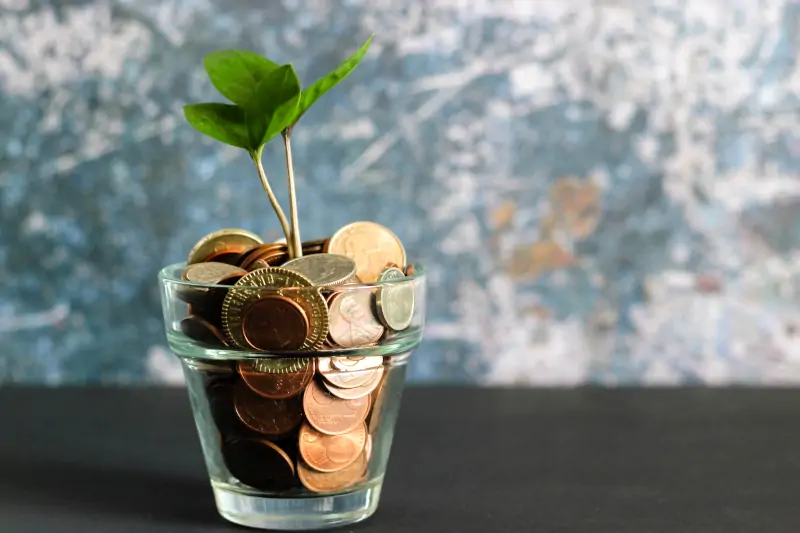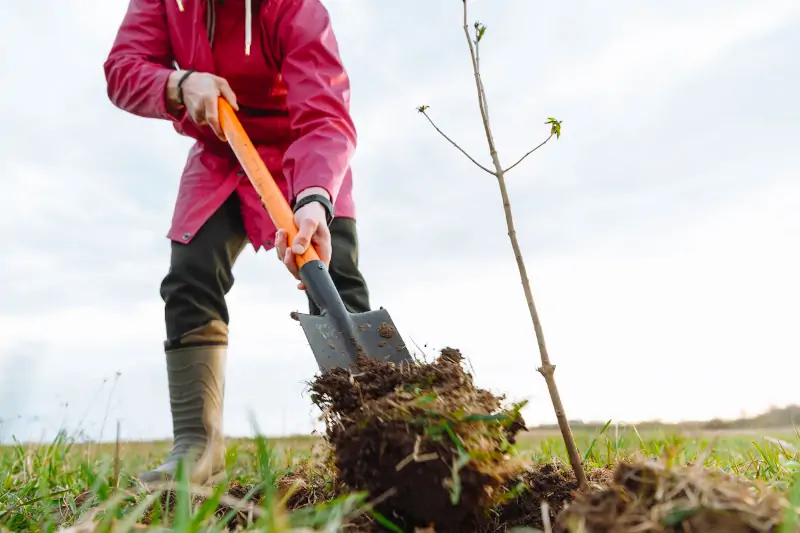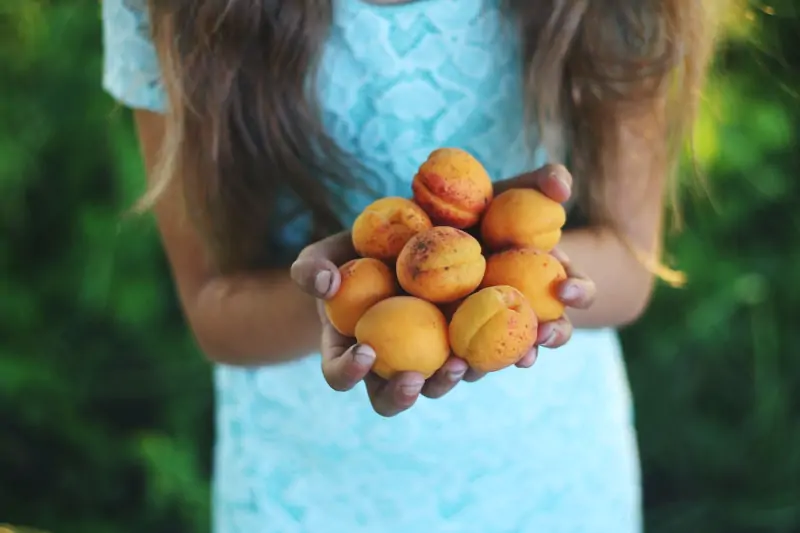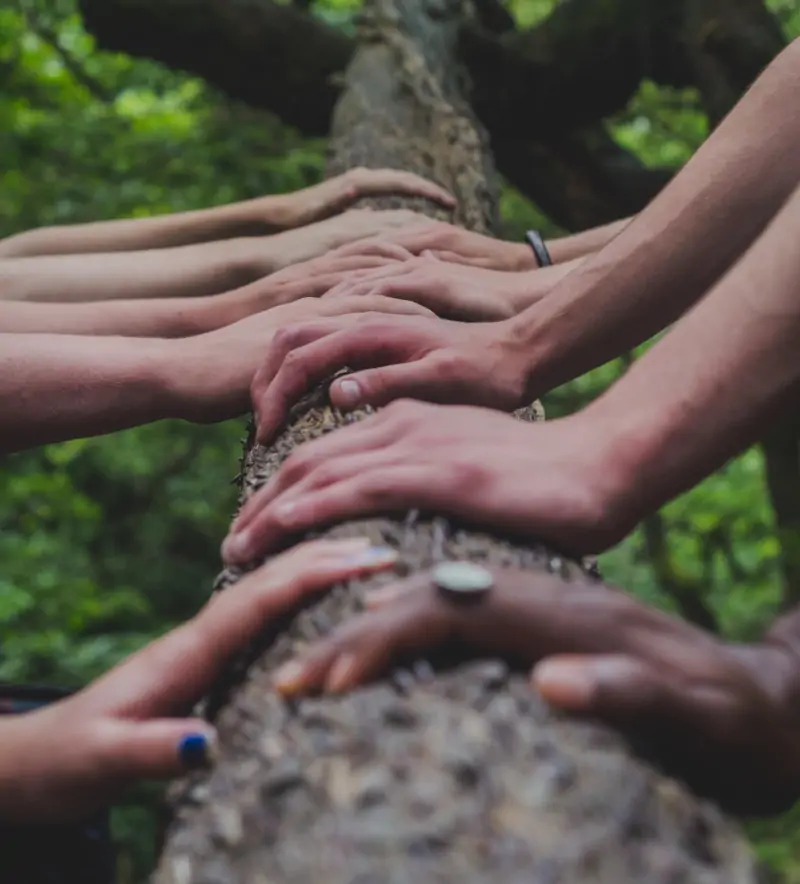1. Food

If you are just starting out, then the prospect of growing your own food is probably your first thought.
Once established, an orchard can present an abundance of fruits year after year.
It is not just about the quantity but also the quality and variety of fruits you can cultivate.
You have certainty and peace of mind that everything you grow is completely organic and non-GMO and there are additional benefits too.
Conveniently, you also get to harvest fruits during their peak ripening times, when they are most flavorful, and eat them fresh like they are meant to be.
Another benefit is having access to a greater selection of fruits, including varieties which may not even be available in your local grocery stores.
Without a question, our commercial food supply is heavily industrialized. Many of us are well aware of the use of pesticides, preservatives and other chemicals.
What’s perhaps less known, however, is that companies also deliberately limit our choices when it comes to high quality fruits. It’s not just that there are some exotic fruits that are not produced or brought to market at all due to limited demand. Even with fruits in high demand, companies will consider commercial factors besides quality when deciding what particular varieties to produce.
As far as companies are concerned, it’s not just about flavor or great taste, factors which are important to individual consumers. They also want to make sure their fruits do not spoil quickly and maintain a long shelf life and pleasant appearance until they are eventually sold, even if that means sacrificing flavor.
As a home grower with your own orchard, on the other hand, you can prioritize what is more important to you, and superior flavor is likely your number one priority.
2. Savings

The economics of growing your own fruit trees are not always very straightforward. Whether or not you will be able to realize any savings depends on numerous factors.
First, you have your expenses to deal with. This includes how much you spend on buying fruit trees and ongoing costs like water, fertilizer and equipment for your orchard. To a large extent, your local climate conditions also make a difference.
You will then need to weigh your total expenses against the total value of your fruits. (You could argue your orchard also helps increase your overall property value but such a comparison would not be directly tied to savings.)
Now when it comes to the total value of your fruits, you will need to exercise some judgment. It will be very difficult for you to come out ahead if you focus on growing exactly the same fruits that are already available in your local grocery store at very low prices, especially if your climate is not ideal.
For example, in most areas of the U.S., including most of the Sunbelt, it does not really make practical sense to grow Cavendish bananas. They are generally the cheapest fruit you can buy in a grocery store, and even though your grow zone may be warm enough for your banana tree to survive, it will not be nearly as productive outside the tropical environment that it is native to and where it thrives.
To maximize the value of your orchard, you will want to focus on organic horticulture and also look for fruits that are relatively more expensive or hard to come by in local grocery stores.
Therefore, if your climate is suitable, you should consider including pricey fruits like avocados, pomegranates, figs, dragon fruit, kiwi, and passion fruit should as part your selection.
Now you will probably find it difficult to forgo popular favorites like apples and citrus altogether but even here you can be more selective and opt for special varieties. Instead of regular lime, how about Australian Finger Lime? Instead of your ordinary Navel orange, how about Moro blood orange? You get the idea.
Another way you can amplify your savings is by avoiding spoilage. Frankly, when we shop for groceries, it’s all too common to buy too much. This is less of a problem when you have your own orchard. Many types of fruit trees have extended hang times, which means you can leave ripe fruits on the tree for a long period, weeks or even months, before you need to harvest. Lemons and avocados are well known for this characteristic. Thus instead of picking the fruits off the tree all at once, you can spread out the harvest period and just pick what you need on a daily basis.
3. Exercise

Make no mistake, establishing and caring for an orchard involves a considerable amount of physical exercise.
As you might expect, there are strenuous activities like digging, weeding and pruning.
You’ll also find yourself lifting and carrying heavy bags and containers for all kinds of things you need in your orchard, not only fruit trees but also regular additions like mulch and soil amendments.
Even something as simple as irrigation can involve extra work. Initially, you can turn to watering by hand, but in the long term, you will be better off setting up automatic irrigation lines, like micro sprinklers or drip irrigation, which then also require additional maintenance.
If you are looking for a regular workout, rest assured you will get it. In fact, as your orchard grows in size, you can expect more things to do.
Keep in mind, however, while working on your orchard may take a lot of energy, it is also a rewarding experience.
4. Family

Getting your family involved in your orchard is something that comes very naturally and takes on many forms.
Early on, it’s normal for you to do all the work and to just share what you harvest. Essentially, you do all the work and bring the food from orchard to table. To be clear, there’s nothing wrong with that at all. In a way, it’s also a way for you to show off and get your family excited about the orchard that you started.
However, it doesn’t need to stop there. The next step up is to have them participate in the harvest. Give them the freedom to pick fruits off the tree on their own. To make it more fun, you can give them baskets and organize U-pick events. Your kids can even have their friends join in this activity.
Eventually, you will also want to make it more of an educational experience for them.
As you work on your orchard, have your kids with you and show them what you are doing and why. They don’t just need to be passive bystanders. Most kids are very eager to help, especially when it involves putting on gloves and using garden tools. Of course, you will need to apply your good judgment and make sure the activity is also safe for them.
For more experienced kids, you can go further and assign special tasks and projects for them to complete independently. For example, they could take ownership of a fruit tree and become responsible for its care. It can even be a tree that they planted themselves.
After the harvest, you can also get together with the kids to use the fruits in delicious recipes. You can make all sorts of juices, smoothies, fruit salads and even bake dishes like apple pie, peach cobbler or lemon tart.
Finally, to foster their entrepreneurial spirit, you can help your kids set up a roadside stand in your neighborhood. Hawking lemonade is an age-old American tradition and you can do your part in supporting it. If your kids are up to it, they can even innovate on this basic idea. In fact, if your harvest is especially bountiful, you may even consider taking part in a local farmers market, but be sure to check regulations in case there are special requirements.
5. Community

The community aspect of horticulture is something that is easily overlooked but it becomes more evident over time.
It’s not just about giving away extra fruits to friends and neighbors. They surely appreciate it but there is much more to it.
As you go on to develop and expand your orchard, you do not have to keep to yourself. In fact, even though you may be the only one working on your orchard, you are not alone. There are many like-minded individuals who share your passion and getting in touch is quite easy.
There are various forums and groups that aim to connect fruit tree enthusiasts. And your interactions don’t just have to be online. You can participate in real-life meetups.
While get-togethers usually serve specific purposes, like swapping surplus fruits from your recent harvest or exchanging scion wood for grafting new trees, there is plenty of socializing too.
It’s also important to point out that there is a growing trend of community orchards across many cities. As the name suggests, these orchards are established mainly in public spaces and are cared for by local community members. They are usually open to everyone and this would be another way for you to connect with others who share your passion.
6. Accomplishment

When you grow fruit trees, you are rewarded with a special sense of accomplishment.
Fruit trees are not inanimate. They are alive and respond to what you do and how you care for them. This relationship to life is meaningful.
To start with, it’s a long process for fruit trees to mature and bear fruit. Getting them to that point is ultimately a reflection of your success.
Many common fruit tree varieties have been cultivated over centuries and are now grown outside the regions that they originate from. This means they are often not as resilient as ‘native’ trees, which are naturally acclimated and can survive on their own. Instead cultivated fruit trees are reliant on your help in order to keep growing and remain productive. You typically need to provide supplemental irrigation and fertilizer and protect them from pests and diseases.
In addition, once an orchard is established, it can live on for many years. Many popular cultivars have life spans from 15 to 30 years. And that’s just the lower range. It’s not uncommon for apple and orange trees to live past 50 years. Meanwhile, olive trees are known to live for hundreds of years.
Essentially, your sense of accomplishment is heightened because you are creating something that is literally alive, fruitful and enduring.
7. Happiness

The idea that an orchard can positively influence one’s emotional state is not new. Indeed, it has been around for millenia.
It is thought that immersing yourself in a natural environment surrounded by beautiful plant life can relieve stress and evoke pleasure.
Of course, this is not only true for orchards but more broadly also other cultivated landscapes, such as flower gardens, which ostensibly serve no other practical purpose.
Thus it is counter-intuitive to assume that such an effect does not exist.
That being said, in recent years, there have also been efforts to study this phenomenon scientifically as part of the emerging field of horticultural therapy.
Certainly, anyone with a passion for growing fruit trees won’t need much convincing. Simply put, growing fruit trees makes you happy.

